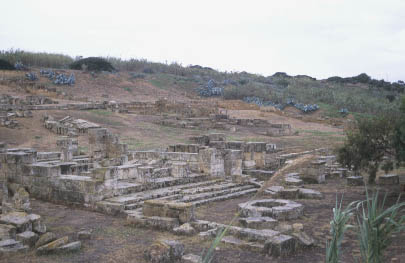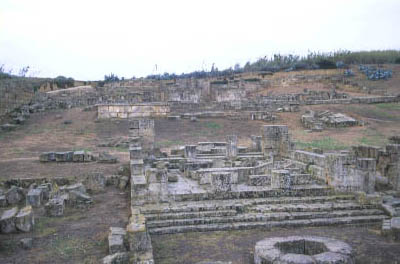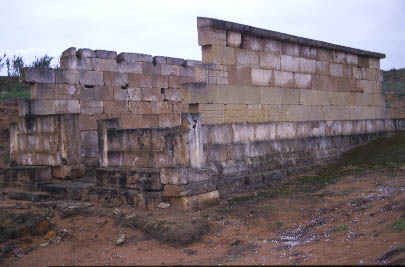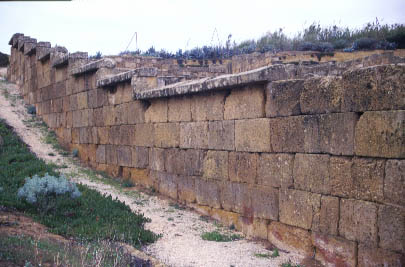|
|
|
 |
On the far side of the river Modione are the remains of one of the most interesting sanctuaries in the Greek world, dedicated by the early colonists to the goddess of fertility (Malophoros means 'apple-bearer', i.e., fruitful), a most appropriate divinity, for people who were primarily farmers, to propitiate. |
|
|
|
|
The sanctuary is protected from profanes' sight by a "temenos" (sacred precint of the sacred area) which is an enclosure wall 3 m. high which forms a shapeless quadrilateral, 60 m long and 50 m wide. The sanctuary consists of a monumental entrance or "propyleon" of the V century B.C. reachable by a four steps staircase; it is formed by two full walls on its sides and two covered porches adorned by four columns. A round structure, typical of Elcusinian worship in Sicily, precedes the Propyleon. On the left and on the right of the propyleons, outside the sacred precint of the temenos, were the title Hekataion dedicated to Hekate Triformis (the goddess of Eleusinian religion sent by Zeus to search for Persephone in Hades), and on the right, in the Northern corner, soon after a "stoa" with seats for the rest of the participants, is the little Meilicheion, the precint dedicated to Zeus Meilichios, pre-Greek sacred numen, whose name derives from the sacred fig-tree famous for its cathartic virtues; he was the numen of the Heart, regeneration and Hades, connected with Eleusinian religion.
To Zeus Meilichios, subterranean god of expiation and benevolence, were sacrified little animals whose skin was preserved because it was believed to favour the rainfall and with the name of "zeus's little fleece" become a purification instrument.
Outside Zeus Meilichios precinct were some votive stelae, crowned with a double male and female "protome", representing, according to Eugenio Manni, Zeus Meilichios and the goddess Demeter Malaphoros, and, according to recent studies, the divine couple, connectable with the Carthaginian cult of fecundity. In front of the Hekataion is the big altar for sacrifices into which were recovered calcined remains of sacrificial animals. Near the altar were found 12.000 caly votive figurines of goddesses or female donors, ranging in date from the VIIth to the Vth century B.C. |




